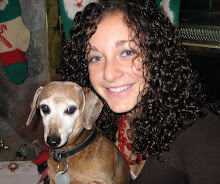Tuesday, November 27, 2007
Reflecting on LBGTQ Literature as a Topic/ My Text Set
Missing! Picture Books Reflecting Gay and Lesbian Families
Sunday, November 25, 2007
"Sticks and stones may break our bones, but names will break our spirit"

-from The Misfits.
Friday, November 23, 2007
..."And Tango Makes Three..."

"Yes it's hard love, but it's love all the same" --Bob Franke

Wittlinger, Ellen. Hard Love. New York: Simon & Schuster Children's Publishing, 1999.
Sunday, November 18, 2007
Confessions of a Closet Catholic QTT
Hey group, here's portions of my paper I thought would be useful, also. =) I'm not exactly sure why it did both single and double spacing, though!
Representations of Guilt
Part Two: Confessions of a Closet Catholic is rich with religious representations, but I will point out the ones that further the question I have posed for my group. The first example I chose to illustrate the question I posed shows how Justine’s obsession with sin causes her to obsess about ways to get all her sins forgiven, all the time when she says, “I figure I’d better do some catching up on the confessing front, especially if I’m going to mass on Sunday. I don’t want to be caught in church with sins on my conscience,” (26). How does Justine’s desire to be clear of sin lead her into more guilt? Why does Justine have such a desire to make sure her conscience is clear? What does Justine not understand yet that makes her so worried about not having a clear conscience?
The next passage I will use as an example shows how serious Justine is about her guilt. She believes her grandmother’s stroke is her fault and in this realization, “A wave of guilt washes over me, guilt so strong that I feel sick to my stomach and start to cry. Because I know it’s my fault. For sitting in church and thinking how good it felt when Tommy’s arm touched mine, committing the Deadly Sin of Lust instead of praying and thinking about holier things” (52). Why does Justine tie every bad event in her life to an act of sinning? How does this make you, as a reader, feel about Catholicism, through her eyes?
The third passage I will point out is Justine thinking, “But most of all I wished God had punished me, instead of taking it out on my poor old Bubbe, who’s already suffered so much in her life” (54). What is Justine’s rationale for God punishing Bubbe? How does that work with the notion of sins and forgiveness and punishment that Justine believes? How does Justine justify that Bubbe was punished because of her sin? The last passage I am going to have my group turn to is when Justine is dealing with Bubbe’s death. Justine says, “It’s even worse because I know that if it weren’t for me, she would still be here. Guilt presses down on me like a two-hundred ton weight” (134). Where is this guilt coming from? Does Justine still believe the Catholic God is punishing her for her sins by taking Bubbe from her? What do all these passages about Justine’s guilt represent to the reader when finding out she is trying to be as Catholic as she can? Is Justine’s worry and obsession with sin an accurate portrayal of a young woman figuring out her beliefs and delving into her own spirituality?
Part 3: Why is it important to represent a young girl struggling with her spirituality, more importantly, a young Jewish girl looking to convert to Catholicism? Let’s examine Linda Silver’s statement in Judging Judaica when she says, “We have arrived at a broad interpretation that looks a t a book in its totality and judges how authentically it portrays the individual characters in their interplay with Jewish belief, history, values and practice” (Silver 235). According to this idea, does Justine seem like an individual character portrayed in an authentic way?

